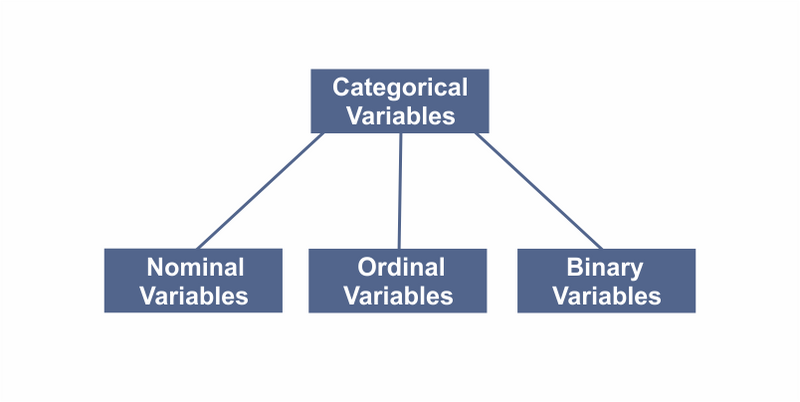An Introduction to Categorical Variables
By Hemanta Sundaray on 2022-03-26
Categorical variables come in 3 types:
- Nominal variables, which describe something,
- Ordinal variables, which have an inherent ranking, and
- Binary variables, which have only possible variations.
Let’s look at each one separately:
Nominal Variables
Nominal variables are usually words (i.e., red, yellow, blue or hot, cold), but they can also be numbers (i.e., zip codes or user id’s).
Ordinal variables
When our categories have an inherent order, we need an ordinal variable.
Ordinal variables are usually described by numbers like 1st, 2nd, 3rd. Ranking in a competition, grades in school, and the scales in survey responses are some of the example of ordinal variables.
Ordinal variables can be a little tricky because even though they are numbers, it doesn’t make sense to do math on them. For example, let’s say an Olympian won a Gold medal (1st place) and a Bronze medal (3rd place). We wouldn’t say that they averaged Silver medals (2nd place).
Binary variables
When there are only two logically possible variations, we need a binary variable. Binary variables are things like on/off, yes/no, and TRUE/FALSE. If there is any possibility of a third option, it is not a binary variable.
Let’s take a look at the following dataset:
There are some obvious nominal categorical variables: STORE NAME & the ZONE are all nominal categorical variables. We know this because they are written in descriptive words or letters.
A little less obvious is the SITE CODE field. It’s a number, but it’s not a count or a measurement. Rather, SITE CODE is a nominal categorical variable since it is describing each store in the same way that the STORE NAME is.
We also have an ordinal categorical variable: RANKING, which has an inherent order.

